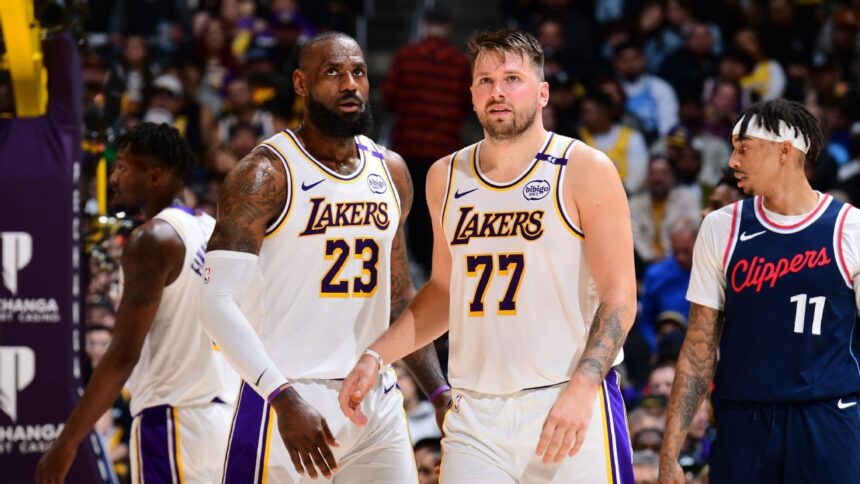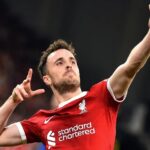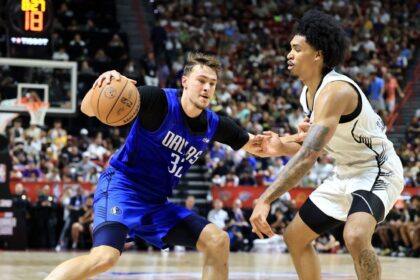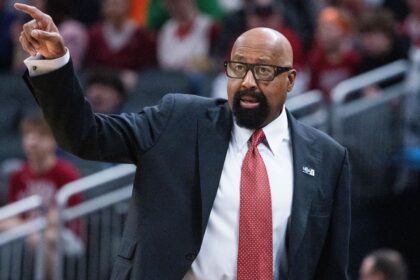Three days before the official start of free agency negotiations and a week after the draft, the NBA has witnessed its usual whirlwind of season activity. Nine-figure surprises! Intriguing transfers! A record contract and drama surrounding multiple MVPs! Below, we analyze the big winners and losers of the summer so far.
NBA Free Agency Winners and Losers
As the offseason progresses, there’s still time for some of these designations to change. But for now, these are the teams, trends, and transactions that matter most. We’ll start with the clearest winner of the 2025 offseason.Winner: Houston Rockets
Regardless of their next moves, Houston would already be a winner of the offseason for the Kevin Durant trade. The Rockets achieved a perfect solution to their biggest weakness without losing any of their best young players or draft picks in return. But the Rockets didn’t stop there. They also signed Dorian Finney-Smith to a four-year, $53 million contract; they signed Clint Capela to a three-year, $21.5 million deal; they signed a manageable contract with Fred VanVleet; they extended Jabari Smith Jr. with a reasonable extension; and they re-signed Jae’Sean Tate, Aaron Holiday, and Jeff Green to round out the roster. The end result of all this activity is a deep and versatile template that can beat opponents in many ways: with defense, rebounds, size, physique, youth, experience and Durant’s scoring genius. The Rockets will challenge the Oklahoma City Thunder for the unofficial title of deepest team. The Rockets will also challenge the Thunder for another official title, because Houston seems to be the second-best team in the West, and therefore, the biggest threat to Oklahoma City’s chances of becoming the first repeat champion since Durant’s Warriors in 2017 and 2018. This is not a perfect template. Houston will rely heavily on VanVleet, now in his 30s and past his prime, due to the lack of depth in the backcourt. The frontcourt rotation could also become complicated if qualified players believe they are not getting as many minutes as they deserve. But those are small objections to an otherwise packed roster. The Rockets skillfully managed their salary sheet, replaced Dillon Brooks with Finney-Smith, and upgraded from an inefficient Jalen Green to Durant, one of the most efficient perimeter scorers in NBA history. This is how you win the offseason.Loser: Los Angeles Lakers
From the moment the Lakers acquired Luka Doncic in a surprise trade, they desperately needed a center. They lost their previous starter, Anthony Davis, in the Doncic trade, and Doncic’s game would fit perfectly with a dynamic pick-and-roll partner.So it was no surprise that the Lakers agreed in principle to a trade for a young and energetic center immediately after acquiring Doncic. But when they rescinded the Mark Williams deal due to a failed medical, the Lakers were left with the players they already had on the roster. Jaxson Hayes started in four playoff games, but clearly did not have the confidence of coach JJ Redick.
Despite the disappointing elimination of the Lakers in the playoffs, their main priority this summer seemed clear. And yet, a few days after the free agency frenzy, all their main potential targets signed elsewhere, and they were left with Deandre Ayton, a surprise addition to the market after a buyout agreement with the Portland Trail Blazers. Ayton doesn’t fit as an ideal short-term solution for a championship contender, nor is he a good long-term fit alongside Doncic. The 2018 draft’s number 1 pick is neither a rim runner nor a floor spacer, and his game peaked half a decade ago. Meanwhile, Ayton’s two-year contract with a player option has little potential for the team. This is a dangerous game for the Lakers, who are trying to manage James’ discontent and persuade Doncic to sign a long-term extension later this summer. For now, there’s not much on this roster that should compel his signature. The Lakers have an unbalanced rotation with many power forwards, but no reliable centers, and their only consequential move, besides signing Ayton, is to replace Finney-Smith with Jake LaRavia.Winner: Depth of big players
A key reason why the Lakers’ search for a center went so poorly and so quickly is that all the good ones are already gone. One of the most important (literally) themes of the first week of the offseason is that teams are doubling down on big players, even if they already seem set at the position. The Rockets signed Capela despite already having Sengun and Adams. The San Antonio Spurs signed Luke Kornet despite already having Victor Wembanyama. The Denver Nuggets traded for Jonas Valanciunas to be the best substitute Nikola Jokic has had in years. The LA Clippers added Brook Lopez to replace Ivica Zubac. The New York Knicks signed Guerschon Yabusele to play with Towns and Mitchell Robinson. The New Orleans Pelicans signed Kevon Looney to split time with the promising young Yves Missi. The Toronto Raptors extended Jakob Poeltl and signed Sandro Mamukelashvili. The Milwaukee Bucks signed Myles Turner and Jericho Sims, in addition to extending Bobby Portis. The desire to have two big lineups also appeared on draft night, as two teams that didn’t make the playoffs in the West established long-term duos. The Trail Blazers chose the 7-foot-1-inch project Yang Hansen to pair with the 7-foot-2-inch second-year center Donovan Clingan, while the Phoenix Suns quickly traded for veteran Mark Williams and selected Khaman Maluach, the first center to be chosen. Other contenders paid to keep their established rotation of big players intact. The Minnesota Timberwolves re-signed Naz Reid and Julius Randle for a total of $225 million; add Rudy Gobert, whose extension begins this season, and the Timberwolves have $334.5 million committed to their big players, even after trading Towns. And the Memphis Grizzlies retained Jaren Jackson Jr. and Santi Aldama for a total of $292.5 million. Furthermore, after the Thunder started with Isaiah Hartenstein, a major free agency investment last summer, and Chet Holmgren together on their way to the title, they extended their third big man Jaylin Williams this week. And the Dallas Mavericks have been very big since they traded for Davis; until Kyrie Irving returns from his injury, their top five players are all power forwards or natural centers: Davis, Gafford, Lively, P.J. Washington, and the number 1 draft pick Cooper Flagg. This league-wide trend could set up some delightful stylistic matchups for the few teams that aren’t following suit, like the Lakers and the Golden State Warriors. But taken together, these transactions make one thing very clear: after a decade of flirting with small-ball, big men are back, and not just MVP winners like Jokic and Joel Embiid, but players of all types and levels, as long as they come with the required size.Loser: Opponents Trying to Score Inside Against the San Antonio Spurs
Here’s a revealing statistic about one of the new big player duos. According to GeniusIQ tracking, 166 players have defended at least 300 shot attempts from within 5 feet in the last two seasons. Of that group, Kornet (52.2%) ranks fifth and Wembanyama (52.3%) ranks sixth in the lowest field goal percentage allowed. I wrote about Kornet on my list of underrated free agent targets, and the Spurs knew his value, signing the journeyman center to a four-year, $41 million contract. He’ll be an excellent backup behind Wembanyama. But don’t rule out their ability to function together, as Wemby-Kornet lineups shouldn’t get too clogged up on offense because Wembanyama likes to play on the perimeter anyway, and they’d form a devastating defensive duo.Winner: Denver Nuggets
Error en el proceso de traducción However, that success didn’t prevent the first true long-term core breakup for Denver, which had been in place even before their title run in 2022-23. The Nuggets traded Michael Porter Jr. and an unprotected 2032 first-round pick for Cam Johnson, an ideal fit in Denver’s offensive system. Johnson is a knockdown shooter (39% on career three-pointers) at high volume, and while he doesn’t have Porter’s size, he’s much more dynamic off the dribble. Furthermore, the financial savings from this trade, because Porter will earn about $17 million more than Johnson next season, gave the Nuggets the necessary leeway to make more additions.First, they signed Bruce Brown Jr., another of my underrated free agent targets and a player with a proven ability to thrive alongside Jokic. Then they traded Dario Saric, who played only 16 games, none in the playoffs, for Denver after a poorly advised free agent deal last summer, for Valanciunas, a high-quality substitute who averaged a solid 20 points and 15 rebounds per 36 minutes last season, in line with his peak numbers.
They should no longer lose points when Jokic goes to the bench, replaced by players like Zeke Nnaji and DeAndre Jordan. Finally, the Nuggets signed Tim Hardaway Jr., a willing and capable shooter (36% from three in his career), who along with Johnson should help boost the Nuggets’ three-point attempt rate, which ranks 30th. Indeed, the Nuggets lost two members of last season’s playoff rotation, Porter and Russell Westbrook. But they added four rotation-caliber players. Denver should now be able to comfortably go nine to ten players deep, with the projected starting five of Brown, Hardaway, Valanciunas and Peyton Watson, plus the possibility of another young player like Julian Strawther making a leap. The Nuggets were much closer than any other team in the West to knocking the Thunder off their path to the championship this spring. And now their 2025-26 roster looks much better than the 2024-25 version.Loser: Milwaukee Bucks
To be fair to the Bucks, this ranking is less an indictment of their specific moves this week and more a reflection of two disastrous years for the organization. That rotten period began with the hiring of the ephemeral coach Adrian Griffin and the trade of Lillard, and then culminated on Tuesday by renouncing Lillard and extending the remaining $113 million of his contract. The Bucks were in a losing position as soon as Lillard ruptured his Achilles tendon in April. They have very few assets beyond Giannis Antetokounmpo: no young talent, no control over their next picks, and no financial flexibility to improve around their two-time MVP. They managed to create some short-term financial flexibility by extending Lillard’s contract and trading Pat Connaughton, which allowed Milwaukee to steal center Myles Turner from the Indiana Pacers, but at an extreme long-term cost. Lillard will now count for $22.5 million against the Bucks’ salary cap for each of the next five seasons. For context, $22.5 million is roughly what Cam Johnson will earn in the coming seasons. (It’s also roughly what Kyle Kuzma will earn in the next two years, meaning the Bucks could have two holes of that size in their salary sheet). That might be a fair price to pay if the Bucks were in contention for the 2025-26 title. But even though the more marginal contenders in the Eastern Conference have hopes for next year, and even though Turner will serve as a younger replacement for Brook Lopez alongside Antetokounmpo, it’s hard to imagine that a team starting Kevin Porter Jr. at point guard, with a perimeter rotation as porous as Milwaukee’s, can realistically compete. Milwaukee’s management deserves credit for its boldness in seeking moves to win now and maximize Antetokounmpo’s prime, dating back to the trade that brought Jrue Holiday, and, soon after, a title, to the city. But boldness alone won’t get Milwaukee more playoff wins; only high-quality NBA players can do that. And even after this week’s surprise, the Bucks don’t have enough.Winner: Atlanta Hawks
It’s not easy for teams led by a smaller point guard to advance deep into the playoffs, because that offensive engine will invariably be attacked on defense. The best strategy to combat this inherent weakness is the model used by the Pacers, as they surrounded Tyrese Haliburton with high-caliber defenders in all other positions on their way to the seventh game of the Finals. The Hawks are doing everything they can to replicate this approach, and have spent the last two summers building a formidable roster around star point guard Trae Young. This offseason, they made an opportunistic trade for Kristaps Porzingis, an injury risk but an undeniable ceiling raiser, who was available due to the Boston Celtics’ desire to shed salary. The Hawks emerged as winners in the Nickeil Alexander-Walker sweepstakes, and replaced Caris LeVert, who went to Detroit, with Luke Kennard, the active career leader in three-point percentage (43.8%). Atlanta’s rotation now surrounds Young with Defensive Player of the Year runner-up Dyson Daniels; athletic and long-range wings in Alexander-Walker, Jalen Johnson, and No. 1 pick Zaccharie Risacher; and, in addition, defensive centers in Porzingis and Onyeka Okongwu. The Hawks haven’t finished a season with a defensive rating better than 18th in Young’s career, but as long as they avoid too many minutes with a Young-Kennard backcourt, they’ll have a chance to be above average this season.And none of those transactions is the best that Atlanta has completed this offseason. That would be the absolute heist that the Hawks pulled off on draft night, when they charged the New Orleans Pelicans an outrageous price to move up 10 spots, from number 23 to 13. But the Pelicans paid! And now the Hawks own the unprotected rights to the best pick between the Pelicans and the Bucks next summer.
Given the Bucks’ ongoing uncertainty and the Pelicans’ weak position in a loaded Western Conference, that selection is expected to land in the lottery. For reference, in my draft value table, the difference between numbers 13 and 23 is equivalent to the number 28 selection, so the Hawks will almost certainly win this trade. Forget about your annual pilgrimage to a play-in game; in an open East, with all these improvements, the Hawks could rise to one of the top four seeds next season. Losing Larry Nance Jr., a stealth bench upgrade for Cleveland, is the only small downside against the otherwise stellar summer of the Hawks.Loser: New Orleans Pelicans
If the Hawks are winners primarily because of their draft day heist, the team they robbed has to appear in the losers’ ledger. This was simply a baffling decision from a new management, led by Joe Dumars and Troy Weaver, who seemed to drastically misread the team’s current position and the state of its roster.
The Pelicans finished 14th in the West last season, and although they will almost certainly improve on a 21-61 record with better health in 2025-26, it’s difficult to identify many teams they will surpass in the standings. Even if the Suns regress, the Spurs in 13th, the Trail Blazers in 12th, and the Mavericks in 10th improved this summer, and New Orleans will have to beat all three of them (or two of them plus another team at the top of the standings) just to make it to the end of the play-in tournament.If the Pelicans don’t make the playoffs, they will send a lottery pick to the Hawks. And they took that risk to be able to select a prospect, Derik Queen, who could become a star, but doesn’t seem to fit wonderfully alongside starting star Zion Williamson. Both “tweener” bigs show similar strengths and weaknesses. Can lineups with Williamson and Queen space the floor? Can they stop anyone on the other end?
They might not be piling on the Pelicans for a single trade on draft night, however misguided it was, if that were their only misstep of the offseason. But the other moves by the new management don’t add up to a coherent strategy either.
New Orleans also traded CJ McCollum and Kelly Olynyk for Jordan Poole and Saddiq Bey (as well as traded second-round picks with Washington). Bey could help the Pelicans after missing all of last season due to an ACL tear, but this was primarily a matter of New Orleans choosing Poole over McCollum. However, although Poole is eight years younger, advanced statistics generally consider the two players to be equal, and Poole is under contract for an additional year at $34 million.And the free agent signing for the Pelicans is Looney, who will be a big question mark in his first time outside of Golden State’s unique system. It’s especially difficult to imagine how this offense will generate adequate spacing with a large number of non-shooters sharing the court; Looney, Williamson, Queen, and starting center Yves Missi have combined for 51 three-pointers made in 922 career games (counting Queen’s college stats and the other three’s NBA stats).











